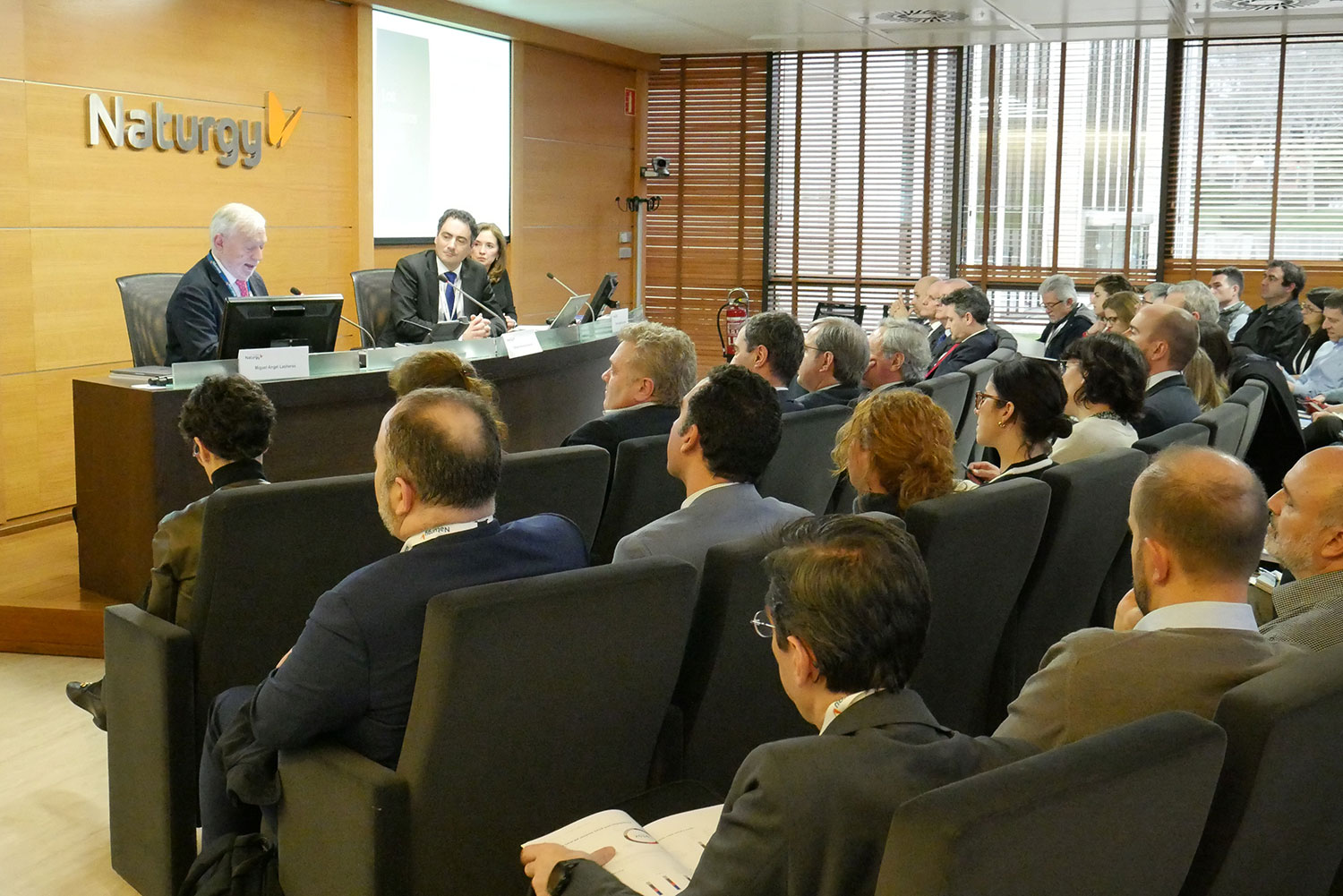The Spanish electricity sector invested 11 billion euros over the last three years in Spain
A report drawn up by Deloitte highlights the investments made by the top five companies in the sector to tackle the major challenges related to the technological changes and decarbonisation process being brought about by the current energy transition.

The top five companies in the Spanish electricity sector invested 11.02 billion euros in their business in this market in Spain between 2016 and 2018. This figure represents a third of the total 32.17 billion euros invested.
These figures form part of the study conducted by Deloitte entitled “The Economic-Financial Situation of the Main Companies in the Spanish Electricity Sector” that was presented earlier today by Oliviero Álvarez, a partner at the firm, during an event on the electricity sector organised by the Naturgy Foundation.
Total investment in R&D+i between 2016 and 2018 amounted to 1.15 billion euros, of which almost one-third was spent on the electricity business in Spain in that period. Between 2016 and 2018, investment in electricity business R&D+i in Spain rose by 40%.
These figures reflect the effort being made by these companies to constantly adapt to the new challenges they face as a result of the technological changes and decarbonisation process being brought about by the current energy transition.
Another figure contained in the report indicates that “the electricity sector in Spain posted an average economic profitability of approximately 3.62% in the period 2016-2018”, while the “average economic profitability from business under the system of free competition (generation and commercialisation) stood at approximately 0.51% per year” for the same period of time.
In 2018, the results from which “were heavily impacted by asset impairment in the sector”, less than half of the turnover posted by the top five companies in the electricity sector was a result of their business in Spain (41 billion from a total of over 96 billion). Furthermore, 53 million euros of the global net income (3.16 billion) can be allocated to their electricity business in Spain.
The document drawn up by the consultancy firm shows that the main companies in the sector provided 27,000 jobs in Spain in 2018.
Furthermore, the report highlights that the effective average corporate income tax rate in the period 2016-2018 stood at approximately 21.8%.
This economic-financial report on electricity generation, distribution and commercialisation business in Spain is based in available public information taken from the audited accounts of the main integrated groups with business across the whole electricity value chain in Spain.
The electricity sector in figures
At the same event, the economist specialising in energy markets, Miguel Ángel Lasheras, presented another study drawn up by the Naturgy Foundation entitled “The Spanish Electricity Sector in Numbers. 2018 Report”, which aims to be the first in an annual series of publications compiling all the official and public information available from the sector in Spain. The report contains data from 2014 to 2018.
Miguel Ángel Lasheras explained that “imports offset not only the increased demand in these five years but also the decrease in domestic electricity output.” According to the report, demand rose by 10.35 TWh in the period 2014-2018 while domestic production fell by 6.55 TWh.
The data on renewable energies contained in the study reflect the significant commitment in Spain to developing these energies. Installed capacity from renewables on the Iberian Peninsula in 2018 accounted for 52% of the total and output from renewable resources stood at 42%.
The report highlights the significant effort made to support renewable energies.In fact, specific remuneration from 2000 to 2018 stood at close on 84.5 billion euros (mainly renewable energy incentives). Specific remuneration stood at 7.24 billion in 2018, of which 5.7 billion was tied to renewables.
The difference between revenue and expenditure in the regulated electricity system between 2000 and 2013 led to an accumulated deficit of over 40.3 billion. However, the regulated system posted a positive balance from 2013 to 2018. As a result, outstanding debt fell to 16.6 billion euros at the end of 2019 (18.85 billion at the close of 2018).
Miguel Ángel Lasheras also mentioned the electricity system cost structure in 2018, which was as follows: 37% energy cost; 16% network cost; 27% charges and other costs; and 20% taxes.
Furthermore, “competition has penetrated the large and medium-sized consumer market, as well as the volumes of energy consumed, and to a lesser degree the domestic market or the number of supply points, due to the regulated tariff effect,” explained the economist.
Miguel Ángel Lasheras said that, “according to Eurostat, electricity prices for industrial consumers in the first half of 2019 were below the European average, and prices for residential consumers – including tax – stood slightly above the average.”
Share